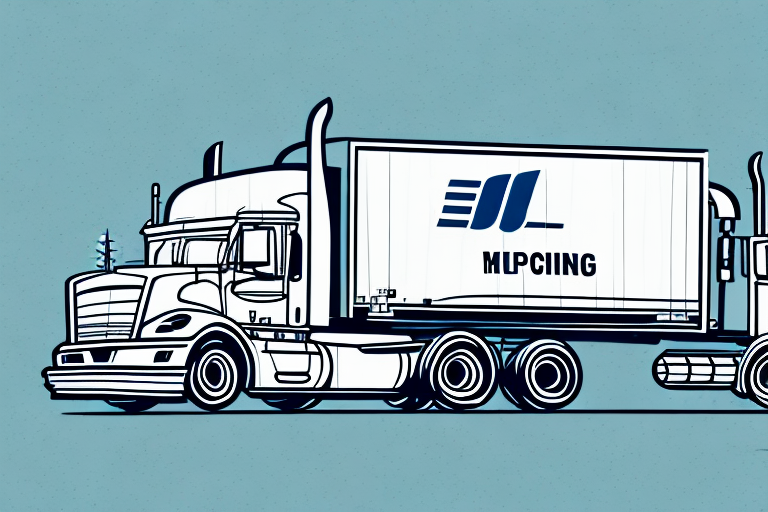UPS Announces Increase in Shipping Rates
UPS, a global leader in logistics and package delivery, announced that it will increase its shipping rates starting from December 27, 2023. The company cites increased transportation costs due to ongoing economic challenges as the primary reason for the rate hike. With online shopping continuing to grow, especially during the holiday season, this news may have a significant impact on individuals and small businesses that rely on UPS for their shipping needs. Here is what you need to know about this announcement and its implications.
How Much Will Shipping Rates Increase for UPS Customers?
Under the new rates, UPS will increase its shipping costs by an average of 4.9%. However, the actual percentage increase will vary depending on the type of service you require and the shipping destination. For example, the increase for UPS Ground shipping for packages within the US, Canada, and Puerto Rico will be around 5.2%, while UPS Air and International services will experience a slightly lower increase of 4.8%. Additionally, the rates for additional handling, large packages, and over-maximum limits will see an increase of $3.00 per package, up from $24.00 to $27.00.
It is important to note that these rate increases are not unique to UPS. Other major shipping carriers such as FedEx and USPS have also announced similar increases. The shipping industry as a whole is facing rising costs due to factors such as increased fuel prices and a shortage of drivers. UPS has stated that these rate increases are necessary to continue providing reliable and efficient service to its customers.
Understanding the Reasons Behind UPS' Rise in Shipping Rates
The increase in shipping rates can be attributed to the impact of the COVID-19 pandemic on the global supply chain and logistics industry. UPS has had to bear added costs related to adapting to the new normal of the pandemic. This includes implementing safety protocols, purchasing personal protective equipment, employing additional staff, and investing in technology to maintain social distancing while managing a surge in online orders. All of these measures have contributed to the rise in shipping costs, ultimately passed on to the customers.
Another factor contributing to the rise in shipping rates is the increase in demand for e-commerce services. With more people shopping online, there has been a surge in package deliveries, which has strained UPS' resources. The company has had to invest in additional vehicles, warehouses, and equipment to keep up with the demand, further increasing their operating costs.
Furthermore, the rise in fuel prices has also played a significant role in the increase in shipping rates. UPS, like other shipping companies, relies heavily on fuel to power their vehicles and planes. As fuel prices have increased, so have the costs of shipping. This has forced UPS to adjust their rates to maintain profitability and cover their expenses.
How Will This Affect Small Business Owners Using UPS Services?
Small business owners who rely on UPS for their shipping needs may feel the impact of the rate hike the most. For many e-commerce businesses, UPS is their primary shipping carrier, and an increase in shipping costs may affect their bottom line. However, entrepreneurs can take steps to offset the additional expenses, such as streamlining their business operations and finding new ways to attract customers while offering competitive prices.
Another way small business owners can mitigate the impact of the UPS rate hike is by exploring alternative shipping options. While UPS may be the preferred carrier for many businesses, there are other shipping companies that offer competitive rates and reliable service. By researching and comparing different shipping options, entrepreneurs can find the best fit for their business needs and budget.
It's also important for small business owners to communicate with their customers about the rate increase. By being transparent and upfront about the additional shipping costs, businesses can avoid any surprises or negative feedback from customers. Additionally, offering promotions or discounts on shipping for loyal customers can help retain their business and offset the increased costs.
Are There Any Alternatives to UPS for Shipping Packages?
Although UPS is widely used for shipping packages, it's not the only carrier available. Several other companies offer similar services with competitive rates, including FedEx, DHL, and the United States Postal Service (USPS). While these companies have also increased their shipping rates, finding the best prices and services will depend on your unique shipping needs, including the volume of packages shipped, the destination, and the desired speed of delivery.
Comparing UPS' New Rates with Other Major Shipping Carriers
A comparison of shipping rates among the major carriers indicates that UPS's new rates are relatively similar to those of its competitors. For example, the USPS increased its rates by an average of 1.8%, while FedEx announced increases of between 4.9% and 5.9% across its range of services. Nevertheless, it's advisable to check the rates before choosing a service to ensure that you are getting the best shipping deal possible.
Another factor to consider when comparing shipping carriers is the level of service provided. While UPS may have similar rates to its competitors, it may offer additional services or benefits that make it a more attractive option. For example, UPS offers a range of delivery options, including same-day, next-day, and two-day delivery, as well as international shipping services. Additionally, UPS provides tracking information and insurance coverage for packages, which can provide peace of mind for both the sender and recipient.
It's also important to consider the reliability and reputation of the shipping carrier. UPS has a strong reputation for on-time delivery and customer service, which can be a deciding factor for businesses and individuals who rely on timely and efficient shipping. By researching customer reviews and ratings, you can gain insight into the experiences of others who have used UPS and other shipping carriers, and make an informed decision based on your specific needs and priorities.
Tips for Saving Money on Shipping Costs Despite the UPS Rate Hike
Although the rate increase may seem overwhelming to many entrepreneurs, there are steps you can take to cushion the impact of the change:
- Negotiate rates with your carrier: Engage with UPS to explore possible discounts based on your shipping volume.
- Use discounted shipping rates from online marketplaces: Platforms like eBay and Amazon often offer discounted rates to sellers.
- Opt for alternative delivery options: Consider ground service instead of air shipping to reduce costs.
- Utilize regional carriers: These carriers often offer lower rates for shipping within specific regions.
- Consolidate shipments: Combining multiple packages into one shipment can help take advantage of volume discounts.
Additionally, you may qualify for discounts on shipping costs depending on the size and frequency of the packages shipped.
Finally, it's important to regularly review your shipping expenses and adjust your strategy as needed. This may include reevaluating your carrier options, negotiating new rates, or exploring new shipping technologies that can help streamline the process and reduce costs. By staying proactive and informed, businesses can effectively manage shipping costs and minimize the impact of rate hikes like the recent UPS increase.
Will the Increase in Shipping Rates Result in Fewer Packages Shipped through UPS?
It's hard to predict the exact impact of the shipping rate hike on the overall volume of packages shipped through UPS. While some customers may opt to explore other shipping options, others may be willing to absorb the cost and continue to use UPS due to brand loyalty or other factors. However, it is expected that many small businesses may be affected by the increased cost and may explore other options, including using multiple carriers, to spread the cost over various services.
Another factor that may come into play is the type of goods being shipped. For example, if the items being shipped are high-value or time-sensitive, customers may be more willing to pay the increased shipping rates to ensure the safe and timely delivery of their goods. On the other hand, if the items being shipped are low-value or non-urgent, customers may be more likely to explore cheaper shipping options.
It's also worth noting that the increase in shipping rates may not be limited to just UPS. Other shipping carriers may also increase their rates, which could make UPS a more attractive option in comparison. Ultimately, the impact of the shipping rate hike on UPS's package volume will depend on a variety of factors, including customer behavior, the type of goods being shipped, and the actions of other shipping carriers.
How Do These Changes Fit into the Current Shipping Industry Landscape?
The recent shift to e-commerce has significantly changed the shipping industry. Online shopping continues to rise, resulting in an unprecedented surge in shipments. Carriers like UPS have had to adjust their operations and implement new measures to keep up with the demand. The increase in shipping rates comes at a time when online shopping continues to grow, and it remains to be seen how it will affect the overall shipping industry.
One potential impact of the increase in shipping rates is that it may lead to a shift in consumer behavior. As shipping costs rise, consumers may become more selective in their online purchases, opting for items with lower shipping costs or choosing to shop at brick-and-mortar stores instead. This could have a ripple effect on the entire e-commerce industry, as retailers may need to adjust their pricing and shipping strategies to remain competitive.
Exploring the Impact of Increased Shipping Rates on Online Retailers
The announcement of increased shipping rates by UPS may have a significant impact on the overall online retail industry. The added costs may affect consumers' shopping behavior, and small businesses may be forced to pass on the cost to the customer, impacting sales. However, some retailers may adopt alternative delivery methods, such as curbside pickups, to reduce their business's overall shipping costs and increase efficiency.
Conclusion
The announcement of increased shipping rates by UPS is a significant development in the shipping and e-commerce industry. While this increase may have far-reaching implications, small businesses, individual consumers, and e-commerce giants alike can take steps to minimize the impact and ensure shipping continues to be a reliable and efficient component of the supply chain.
One potential solution for online retailers to mitigate the impact of increased shipping rates is to offer free shipping for orders above a certain amount. This strategy can incentivize customers to purchase more items in a single transaction, increasing the average order value and offsetting the cost of shipping. Additionally, retailers can negotiate better shipping rates with carriers by leveraging their shipping volume or partnering with other businesses to pool their shipping needs. By exploring these options, online retailers can maintain their competitiveness and profitability in the face of rising shipping costs.




















